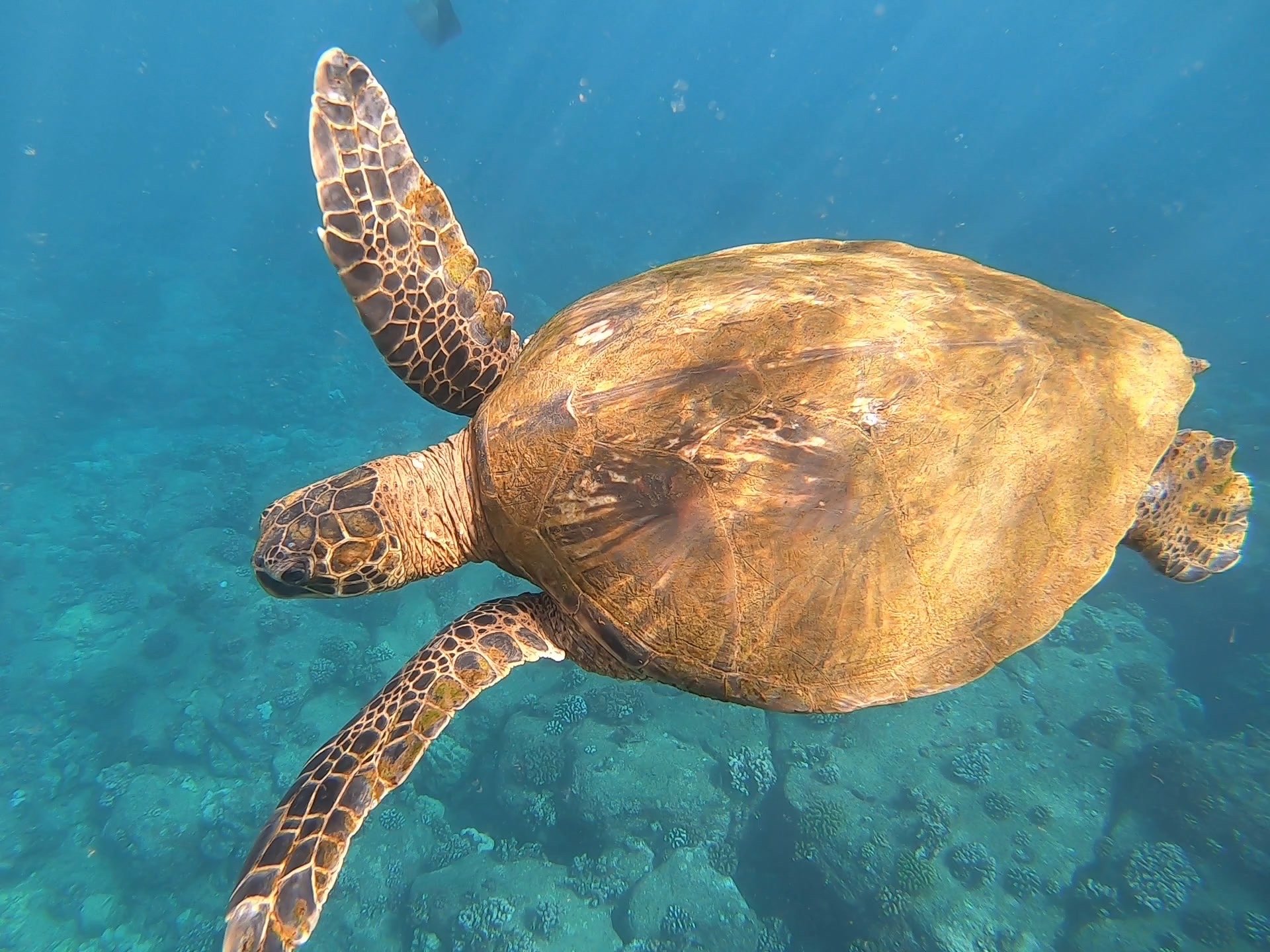Hawaiian Sea Turtles
Kaua’i boasts some of the best Sea Turtle populations in the world. Our abundant, rich fresh water releases nutrients that make the limu or seaweed that Pacific “Green” Sea Turtles love to eat!
Sea Turtle Physiology
Amazingly complex and efficient for a reptile. Sea Turtles have looked the same for 75 million years. The shell or “carapace” protects the anatomy that can digest algae or “limu”.Green Sea Turtles have a serrated upper jaw that scrapes and shears leafy seaweeds. Their active gut flora is a natural probiotic!
Humans and Sea Turtles can exist together. Below are actions that we all can take to participate in Sea Turtle Preservation.
Ways we can help the Honu:
Use trash receptacles for debris while at the beach, plastic bags, cigarette filters and monofilament and any material that can make it”s way into the ocean
Pick up beach trash and participate in community clean ups in beach and reef clean-ups
Enjoy from a distance-Do not ride, touch or harass Hawaiian Green Sea Turtles
Reduce your use of lawn and garden fertilizer; the excess washes into the sea and creates unhealthy algae blooms that compete with the food of the Pacific Green Sea Turtles.
When viewing a turtle coming onto the beach, remove obstacles such as beach toys and chairs from their path.
Mālama i nā honu
Mālama i nā honu has expanded its volunteer services to the Hawaiian Island of Kauai at Po'ipu Beach for our education and volunteer program. If you are interested, please contact our Volunteer and Education Coordinator directly Debbie Herrera at 808-388-9778 or email.
FAQ’s
To report a sea turtle in trouble (injured, stranded, hooked, entangled, etc.) please go to the NOAA sea turtle reporting website. Please report immediately and follow the handling guidelines on the NOAA website above.
-
Most turtles that haul-out on the shoreline are just fine. They may lie very still, as if they are not breathing, but that’s normal.
Please keep your distance; do not try to get close to the animal. They need to be allowed to rest undisturbed. If you see an obvious sign of injury, such as an open wound or entanglement in rope or net, please call the NOAA hotline at (888) 256-9840.
-
Please visit NOAA’s injured turtles website or call the NOAA hotline at (888)-256-9840 for instructions.
-
There is no law specifying the minimum distance people can approach a sea turtle.
However, getting close to these animals may constitute a federal or state violation if the animal is disturbed or if your action has the potential to disturb its natural behavioral patterns.
NOAA and DLNR recommend, for your safety and the animals’ protection, that everyone stay at least 10 feet (3 meters) from all sea turtles. If maintaining this distance isn’t possible, keep safety in mind and move away from the animal as carefully as possible, avoiding sudden movements and other actions that might disturb the animal.
For wildlife viewers, please enjoy from a distance – use binoculars and telephoto lenses to get the best views without disturbing the wildlife.
-
Per the Good Samaritan Act, you may remove the fishing line from the turtle and that will help reduce entanglement and mortality.
Call the NOAA hotline at (888) 256-9840 and follow instructions, and/or visit NOAA’s fishing around sea turtles website for instructions.
Hawai’i Statewide Marine Animal Reporting Hotline:
(888) 256-9840
*Includes stranded, injured or entangled sea turtles, monk seals, dolphins, and whales. Immediately call/report possible illegal or suspicious activity.





